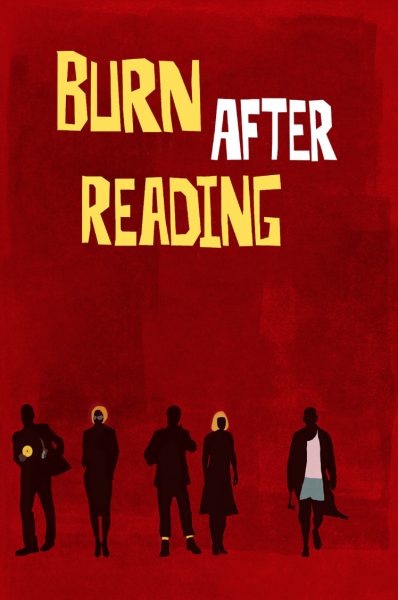
Between love triangles, mysterious disappearances and aiding foreign governments, you’d think you were watching a James Bond movie. The Coen Brothers’ 2008 film “Burn After Reading” crafts a picture of life in Washington, D.C. that is more farce than force. In the film, a cast of normal, middle-aged people endure a series of hilarious bad decisions and coincidences that leave the viewer grasping for a takeaway. But that is the film’s message: don’t force life, let it happen.
The plot centers around a group of characters, each representing a different archetype of the lonely adult who are brought together by chance but whose fates are intertwined.
Osbourne “Ozzy” Cox (John Malkovich) is a profane CIA analyst who quits his job in the opening scene and whose wife is cheating on him with Harry Pfarrer, a man he already despises. Despite all his career accomplishments and Princeton degree, Cox is bitter over having little to show for it. In the end, his attempt to write a memoir, which he pronounces ‘MEM-wah,’ indirectly triggers the plot. He is the main character, in many ways, despite spending most of the film’s runtime fuming on his boat in a bathrobe with a glass of scotch. While much of what befalls him is not his fault, it is difficult to sympathize with someone so focused on revenge and so unwilling to see life as anything aside from their own success. He may believe himself to be better than the gym employees he’s pitted against, but the gym employees have hope.
Linda Litzke (Frances McDormand) is a single personal trainer at a gym obsessed with how plastic surgery will help her find love. After insurance denies coverage for her surgeries, she is willing to do anything to get the money to fund them. All the while, she fails to realize that her manager is deeply in love with her and continues online dating to find someone who isn’t a “negative person.”
Despite her angst, hypocrisy and rash behavior, she is an eternal optimist.
George Clooney plays Harry Pfarrer, reprising his role in the Coen brothers’ films as their charismatic idiot. On paper, Harry is a successful government employee: wealthy, married and obnoxious. He suffers from a “lactose reflux,” which he uses as a malapropistic attempt to individuate himself, alongside the gun that he must have on him at all times since his stint in the U.S. Marshals Service. Yet, at heart, he’s a paranoid womanizer who believes that cheating on his wife and going on long runs will bring his life the new spark he feels it deserves. Ultimately, he proves to be the only character who realizes the scale of their actions’ consequences.
Chad Feldheimer (Brad Pitt) seems to be the only fulfilled or happy character. He’s also the only one under 45 years old. His youthful exuberance gives the movie some entertaining comic relief as well as the feeling that ignorance is bliss. He is Linda’s coworker at the gym and her best friend. Chad depends on a strict physical regimen: biking everywhere. He is never without his headphones and front wheel. While Linda, Ozzy and Harry search for a purpose, Chad lets the wind take him where it may. But fate is blind.
Finally, there is the unnamed CIA superior (J. K. Simmons), whose few minutes of screen time attempt to summarize the movie’s lesson. As he is gradually informed of the interlocked fate of the movie’s characters throughout the movie, he attempts to conceal details rather than investigate the situation any further. He represents the improvisational pragmatism of Washington’s institutions: imperfect and often incompetent. In the final scene, he asks his subordinate, “what did we learn, Palmer?” “I don’t know, sir,” Palmer replies.
“Burn After Reading” is a black comedy with an emphasis on comedy. As they do in “A Serious Man” and “Fargo,” the Coens ask viewers to laugh at an absurd tragedy in order to poke fun at the idea of making sense of life. While they often play with the idea of fate, “Burn After Reading” prescribes a solution: just roll with it. After all, appearances can be… deceptive.






